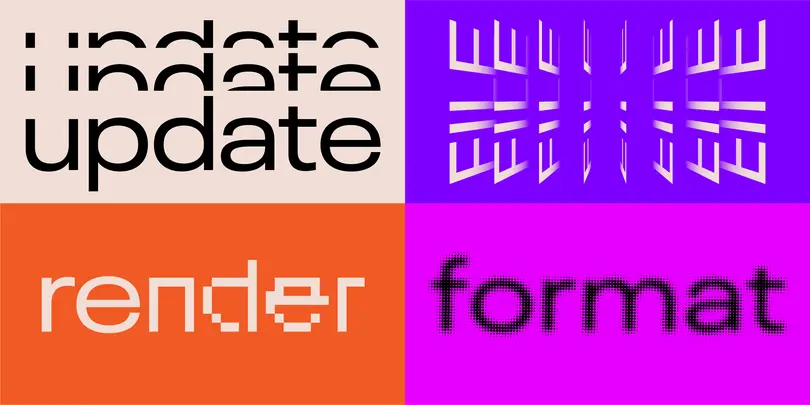The end of PostScript fonts is here, are you ready?

Adobe has announced that they’ll sunset support for authoring content with their Type 1 fonts (also known as PostScript, PS1, T1, and Adobe Type 1 fonts) by 2023. Read on for what you need to know.
Type 1 fonts have already lost support in Photoshop and will be phased out of new versions of Adobe Creative Cloud products throughout the rest of this year. And according to a support document from Apple after the public release of macOS Ventura, Preview no longer supports PostScript (.ps) and Encapsulated PostScript (.eps) files. Still using Type 1 fonts? Read on for everything you need to know about this move.
What are Type 1 or PostScript fonts?
Developed in 1984, PostScript fonts are a vector-based format, designed for use alongside Adobe’s PostScript page description language. Type 1 fonts print beautifully, rendering high-quality lines and curves even at lower resolutions thanks to their then-revolutionary hinting technology. Adobe’s high licensing fees set off competition among other industry players and ultimately led Apple to create TrueType fonts with similar functionality. Eventually, the industry rallied together to evolve and improve Type 1 font technology and create OpenType fonts, which are more sophisticated and popular today than both TrueType and Type 1 fonts.

What will happen once Type 1 font support is dropped?
You might be asking yourself, “What’s the big deal? PostScript fonts have been around for a long time and have been used by a lot of people, both on the web and in print.” You’re not wrong. Although they once experienced widespread usage, PostScript fonts are no longer a reliable choice. PostScript fonts don’t work on newer computers, and they aren’t compatible with newer browsers like Microsoft Edge™ or Mozilla Firefox® Quantum—meaning if your website uses these kinds of fonts, it won’t display properly when viewed through those browsers.
Perhaps most importantly, updated versions of Adobe applications will no longer recognize Type 1 fonts, even if they’re installed on your desktop. They’ll trigger a “missing font” error in your applications and will no longer appear in the Fonts menu; that means you won’t be able to create anything new using Type 1 fonts. Older versions of Creative Cloud applications will still support these fonts, but beware: many operating systems are taking cues from Adobe and ending support for Type 1 fonts soon. When that happens, even older versions of Creative Cloud applications will no longer support Type 1 fonts.
Embedded Type 1 fonts in Portable Document Format (PDF) and Encapsulated Postscript (EPS) files will still display after support is dropped, but you won’t be able to make any text edits; non-embedded fonts in these file formats will be replaced with default fonts instead.
How to tell if your fonts are PostScript.
The more fonts your organization has in circulation, the harder this will be. As a first step, identify your company’s central font owner; that person will know if any font management software is in use or if there’s a comprehensive list or repository of fonts. If there is no font owner on staff, you can search your computer (and those of every designer in your organization) for Type 1 fonts. Here’s how to do that:
Instructions for Mac users:
Open Spotlight search by pressing Command + Spacebar, then type FontBook in the search field. Click the magnifying glass, select Kind, and enter Type 1 in the search field. That should generate a list of all the PostScript Type 1 fonts on your machine.
Instructions for PC users:
Open the Fonts control panel by right-clicking the Start menu, selecting Run, typing c:\windows\fonts, and pressing Enter. There should be a menu bar near the top of the Fonts control panel window; if you don’t see it, click Organize and select Layout > Menu bar. Select View > Details, then View > Choose details. In the Choose Details window, click the Font type box and click the text to highlight it. Click the Move Up button until Font type appears directly below Name in the Choose Details window; once it’s positioned, click OK. Now you should see a list of your installed fonts that includes both the Name and Font type. Clicking the Font type column header will sort all fonts by type; scroll through to see all your Type 1 fonts clustered together.
If you discover any Type 1 fonts, consider printing a sample of each one for easy reference when researching replacements. Then move on to the next step.
Figure out where those Type 1 fonts are still in use.
This can be a tedious DIY process, especially if you have a large font library or long-term projects that are updated only periodically, like book reprints. Adobe Creative Cloud 2022 applications will flag Type 1 fonts for you; theoretically, you could open each of your projects to see if any flags pop up, but that would be incredibly time-consuming.
A better option is to use a font management platform that will streamline licensing and alert you when you need to update fonts.
Make the fix: replace outdated fonts.
Many Type 1 fonts already have OpenType or TrueType alternatives. A few foundries still provide both Type 1 and OpenType versions of their fonts, but many have discontinued their development of the old technology in favor of newer platforms. Some foundries offer discounted upgrades from PostScript to TrueType or OpenType formats.
The end of the Adobe PostScript font format is near, and it’s time to start using more modern formats like TrueType or OpenType. If you haven’t done so already, now is the time to upgrade your old fonts.
The easiest way to do this is by using a single font management platform. Streamlined licensing with such a system will cover all upgraded fonts with a single agreement, eliminating the need to license individual fonts from a variety of foundries. Features like one-click sync send fonts to everyone who needs them for seamless workstation updates. This can transform a lengthy, painful font replacement exercise into a hands-off process – and it also means you’ll never have to worry about this happening again. The next time a font or format is made obsolete, your font management platform can help you replace it before your workflow is ever impacted.














